When it comes to modifying your diesel truck, we all know that tuning is the best bang-for-your-buck. Tuning is not magic, it is a science. It takes time to understand all the intricacies and tables that come with it. All tuning is about is recalibrating your factory ECM, with that we’re able to work with factory parameters and modify them to what your custom tuning needs. 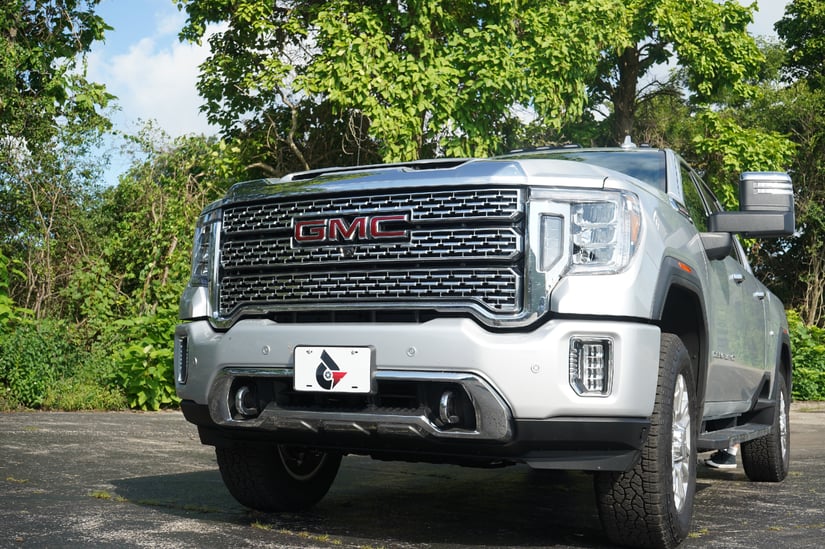
With tuning, tables and parameters are immense, especially with the new trucks and all they have intact on them. Today we are going to discuss and specifically hone in on fuel and air. Every truck has a certain amount of head room with the turbocharger of how much air we can put into the motor. With tuning we can recalibrate adding more air by adding more fuel. The factory turbocharger is only good for so much air, but how much fuel can we add to push that and find the limit?
To demonstrate and give examples of what this all entails with tuning, we are using our 2020 L5P. We have done extensive R & D and testing on this platform since the first day our 2017 L5P rolled into the shop. After years of beta testing and a lot of time with L5P trucks on the road sporting our tuning, we feel this is the best truck to show the main injection pulsewidth table. 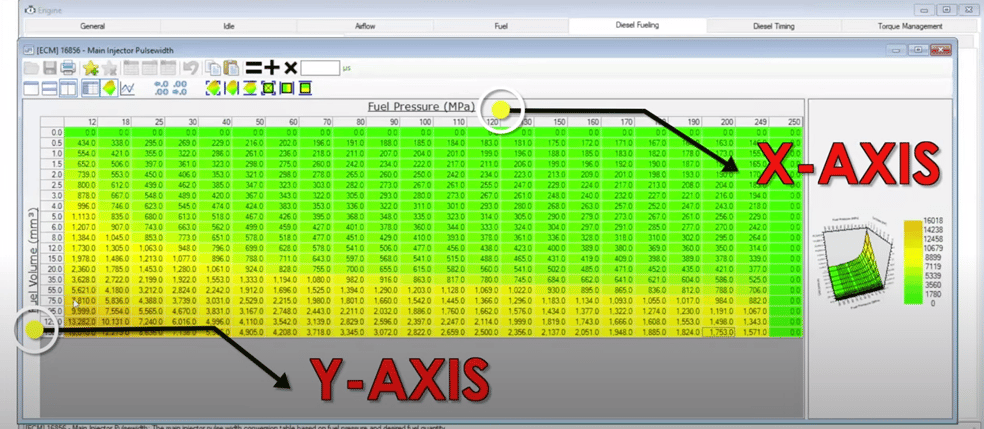
As you see in the picture, we have fuel pressure on the X-axis and fuel volume on the Y-axis. Pulsewidth is the certain point these two axis intersect, the duration at which how long the injector stays open and sprays fuel in the cylinder. With tuning, we can control that duration time. The table above is of a stock 2020 L5P. A stock truck runs about 200 mpa and full fuel is between 140 and 150 mm3. With a stock L5P we should be right between 1750 and 1500 microseconds. That’s good on these trucks for about 392 - 410 RWHP. We cap the pulsewidth at around 3000 - 3200us.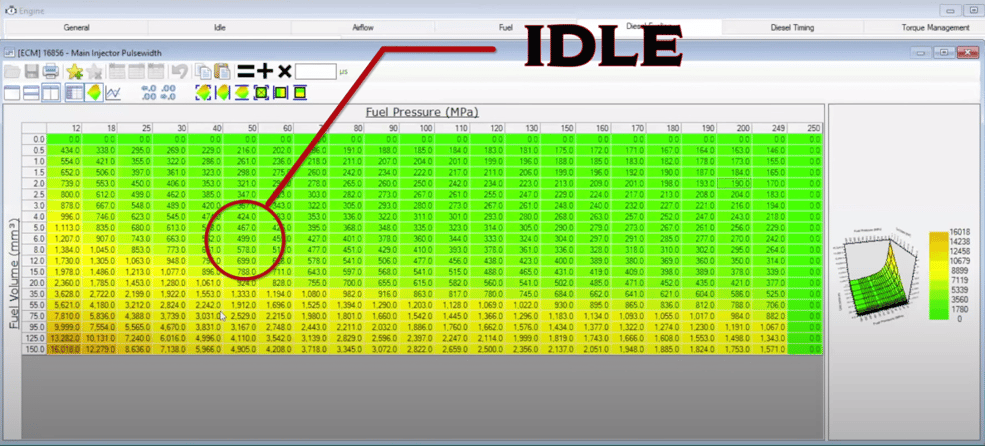
Let’s look at some other areas that are crucial on the pulsewidth table. You can see the diagonal line where the green meets yellow. Idle is typically going to be between 8.0 - 12.0 mm3 and 5000 - 7000 psi, you can see the location circled in the picture above. Another area of interest is where we have full fuel pressure as pointed out in the picture below.
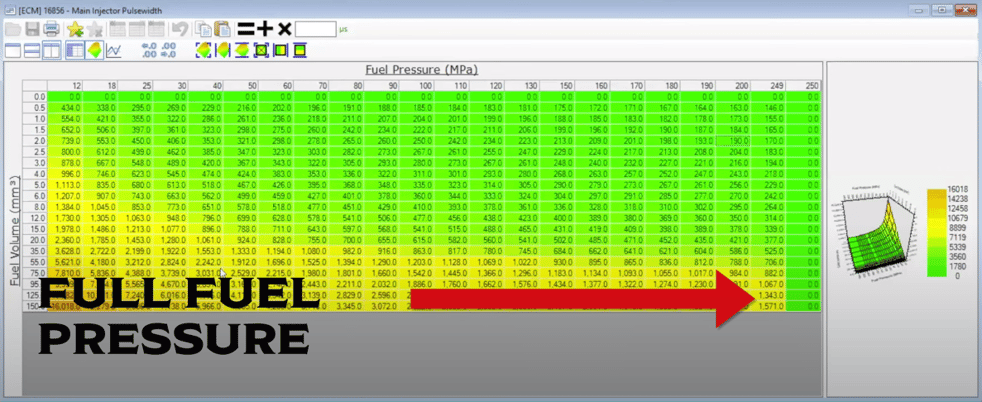
A lot of diesel enthusiasts may tell you “oh, I’m running 2600us in my truck.” Well, with that it’s only telling you the maximum amount of fuel. That doesn’t tell the story of the transient stage. The transient stage is that diagonal line we discussed earlier. It is also pointed out in the picture below. That transient stage, that’s most important. Why? That’s where we modify to give you the best drive-ability for your truck.
After determining what the pulsewidth will be, it’s not as simple as just throwing a certain number in the bottom corner of the map. There are other factors that need to be addressed. To start we are going to get torque to fuel and calculate. So we are going to take the fuel volume (mm3) and we are going to be 150mm3 on a stock truck at about 1750 - 1580 pulsewidth. From there you are going to get into where does that line up with where we are allowing the truck to make for torque. Torque on these trucks is just a reference for full load.
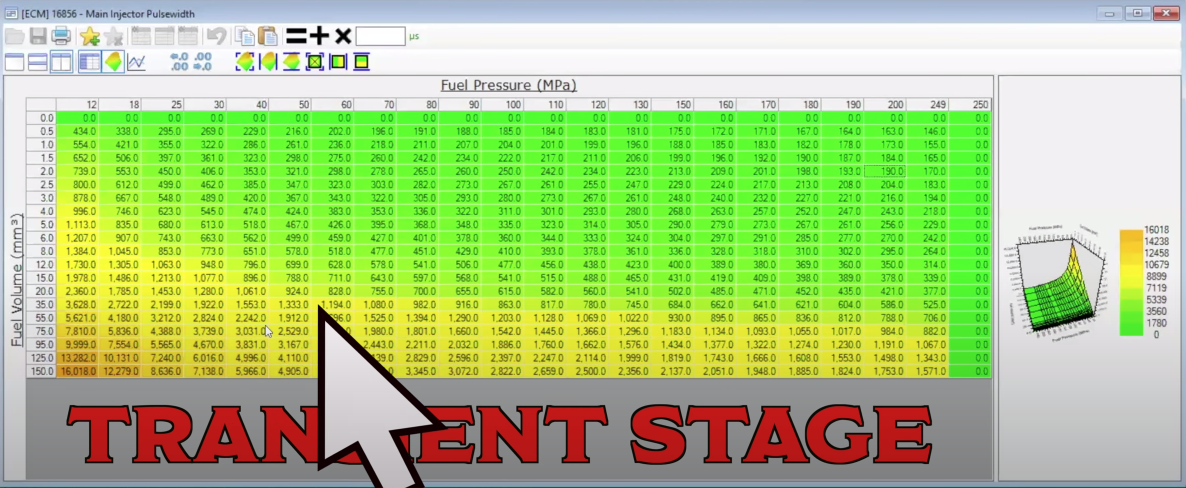
Now we need to work with efficiency and air fuel ratio. That’s the balance between turbocharger and how much air we can bring in and the fuel and how much we can give it. Certain trucks turbochargers can support 600 HP, but I only have 550 HP of injector. With the L5P platform, that’s changed. The truck runs out of turbo at 550 HP, but they have enough fuel for 700 HP. This is where you have to be careful with tuning. If you add too much fuel, you are going to make a mess in the DPF. 
When adding power, you have to really mind factory safety settings, air to fuel ratio, and a slew of other calibrations to make sure that while your truck has added an extra 100 HP, it still maintains great drive-ability. Most of us use our trucks for hauling our toys with us on family vacations, daily commuting and the like. That’s why choosing tuning that truly makes sure your truck is getting the best possible drive-ability and reliability coupled with power is important. If you have any more questions about tuning your truck, click the button above!



